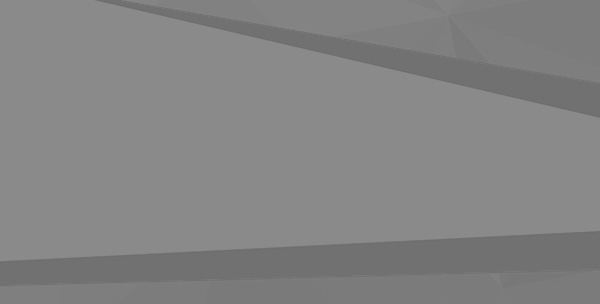-
 浙江甲级建筑设计院诚邀全国优秀团队加盟开设分院及分所 接受挂靠
浙江甲级建筑设计院诚邀全国优秀团队加盟开设分院及分所 接受挂靠
-
 何镜堂院士作品:济宁市图书馆
何镜堂院士作品:济宁市图书馆
-
 中交国际中心成为数字建筑标杆
中交国际中心成为数字建筑标杆
-
 如何设计一家比较有“气质”的女装店铺
如何设计一家比较有“气质”的女装店铺
-
 何镜堂院士作品:济宁市图书馆
何镜堂院士作品:济宁市图书馆
-
 中国建筑学会秘书处部门设置
中国建筑学会秘书处部门设置
-

-
 碳纤维布有哪些用途
碳纤维布有哪些用途
-
 【建设库】7种投标会被认定为中标无效!
【建设库】7种投标会被认定为中标无效!
-
 百年前的建筑!布达佩斯城市摄影
百年前的建筑!布达佩斯城市摄影
-
 建筑考察
2015.09.30,我有了自己的正五昌兵马
建筑考察
2015.09.30,我有了自己的正五昌兵马
-
 缅甸皇家国际电投
缅甸皇家国际电投
-
 第六届中国建筑学会梁思成建筑奖获奖者名单
第六届中国建筑学会梁思成建筑奖获奖者名单
-
 道法五雷火收拾小鬼附身,立竿见影!重庆彭师傅
道法五雷火收拾小鬼附身,立竿见影!重庆彭师傅
-

-
 河姆渡感恩节限时秒杀 温暖来袭
河姆渡感恩节限时秒杀 温暖来袭
-
 中国建筑学会科技进步奖评选办法(试行)
中国建筑学会科技进步奖评选办法(试行)
-
 一支针管笔,一幅手绘画,厉害了我的哥
一支针管笔,一幅手绘画,厉害了我的哥
-

-
 2021(第十届)国际桥梁与隧道技术大会 暨‘一带一路’交通基础设施高端论坛
2021(第十届)国际桥梁与隧道技术大会 暨‘一带一路’交通基础设施高端论坛
-
 同事一起出“15本”中级建筑
同事一起出“15本”中级建筑
-
 2021(第十届)国际桥梁与隧道技术大会-特邀嘉宾及演讲嘉宾
2021(第十届)国际桥梁与隧道技术大会-特邀嘉宾及演讲嘉宾
-
 一位美国结构工程师的职业生涯
一位美国结构工程师的职业生涯
-
 【建设库】你知道企业投标不中标原因有哪些吗?
【建设库】你知道企业投标不中标原因有哪些吗?
-
 【建设库】招投标时,怎样做才能中标?
【建设库】招投标时,怎样做才能中标?
-
 2021(第十届)国际桥梁与隧道技术大会
2021(第十届)国际桥梁与隧道技术大会
-
 住房和城乡建设部关于2021年第九批 一级建造师注册人员名单的公告
住房和城乡建设部关于2021年第九批 一级建造师注册人员名单的公告
-
 规划设计
植筋加固有哪些环节容易被忽视
规划设计
植筋加固有哪些环节容易被忽视
-
 方案及效果图
2009年一、二级注册建筑师资格考试建筑结构模拟知识题
方案及效果图
2009年一、二级注册建筑师资格考试建筑结构模拟知识题
-
 建筑历史
德国被动房与中国气候带
建筑历史
德国被动房与中国气候带
-
 建筑风水
甲级建筑设计院 诚邀加盟挂靠 开设分院 目前有扶持政策
建筑风水
甲级建筑设计院 诚邀加盟挂靠 开设分院 目前有扶持政策
-
 建筑图集
建筑师设计手册
建筑图集
建筑师设计手册
-
 建筑论文
你知道单向碳纤维布吗?
建筑论文
你知道单向碳纤维布吗?
-
 建筑电子书
2007-2014年二建各科真题详解整理发布
建筑电子书
2007-2014年二建各科真题详解整理发布
-
 建筑软件
重庆彭师傅的驱邪案例:打个电话吓个鬼
建筑软件
重庆彭师傅的驱邪案例:打个电话吓个鬼
-
 建筑规范
新三亚科技提供涂料喷涂机具租赁服务
建筑规范
新三亚科技提供涂料喷涂机具租赁服务
-
 建筑施工图
浙江甲级建筑设计院诚邀全国优秀团队加盟开设分院及分所 接受挂靠
建筑施工图
浙江甲级建筑设计院诚邀全国优秀团队加盟开设分院及分所 接受挂靠
-
 结构设计
碳纤维板和钢板比较谁更适合加固
结构设计
碳纤维板和钢板比较谁更适合加固
-
 混凝土结构
怎么提高结构改造加固质量等级
混凝土结构
怎么提高结构改造加固质量等级
-
 钢结构
达州酒店住宿发票13632424302
钢结构
达州酒店住宿发票13632424302
-
 砌体结构
正本清源!什么才是真正的道士?
砌体结构
正本清源!什么才是真正的道士?
-
 结构加固
如何购买合适的修补裂缝的灌缝胶胶水?
结构加固
如何购买合适的修补裂缝的灌缝胶胶水?
-
 结构软件
晋中增值税专用发票13632424302
结构软件
晋中增值税专用发票13632424302
-
 地基基础
将才在此,来带走(一级房建)
地基基础
将才在此,来带走(一级房建)
-
 特种结构
特种结构
-
 结构论文
代开聊城酒店住宿票13632424302
结构论文
代开聊城酒店住宿票13632424302
-
 结构电子书
结构工程师《专业考试》两本习题集电子书下载
结构电子书
结构工程师《专业考试》两本习题集电子书下载
-
 施工技术
搅拌站站长肺腑之言:转行的8大理由
施工技术
搅拌站站长肺腑之言:转行的8大理由
-
 土建施工
碳纤维有哪些优良性能?
土建施工
碳纤维有哪些优良性能?
-
 给排水施工
急需中高级暖通、中高级给排水、中高级结构、中级电气
给排水施工
急需中高级暖通、中高级给排水、中高级结构、中级电气
-
 暖通施工
陕西西安硕天教育
暖通施工
陕西西安硕天教育
-
 环保施工
时光,请许外婆慢些老去
环保施工
时光,请许外婆慢些老去
-
 园林施工
园林施工
-
 水利施工
创业好机会,不知道干什么??养鹅致富是门路
水利施工
创业好机会,不知道干什么??养鹅致富是门路
-
 电气施工
关于举办“第二届中国智能制造峰会2016”的通知
电气施工
关于举办“第二届中国智能制造峰会2016”的通知
-
 市政施工
资质合作
市政施工
资质合作
-
 资料交流
北京炎黄大厦室内装饰工程
资料交流
北京炎黄大厦室内装饰工程
-
 建筑给排水
建筑给排水
-
 消防给排水
正本清源!什么才是真正的道士?
消防给排水
正本清源!什么才是真正的道士?
-
 市政给排水
市政给排水
-
 纯水中水
They claimed to have not heard the gunfight at all
纯水中水
They claimed to have not heard the gunfight at all
-
 给排水施工图
如何在电玩娱乐城百战百胜?数十种辅助软件汇总…
给排水施工图
如何在电玩娱乐城百战百胜?数十种辅助软件汇总…
-
 水处理
正本清源!什么才是真正的道士?
水处理
正本清源!什么才是真正的道士?
-
 给排水论文
给排水论文
-
 给排水软件
水经注离线三维地球触摸GIS系统
给排水软件
水经注离线三维地球触摸GIS系统
-
 资料交流
招聘高价急急急急急需各类职称证书挂靠
资料交流
招聘高价急急急急急需各类职称证书挂靠
-
 膜生物反应器
膜生物反应器
-
 采暖工程
广东单位诚聘暖通工程师
采暖工程
广东单位诚聘暖通工程师
-
 通风工程
请问有没有中级暖通,采暖通风,热力供风工程师职称证书挂资质?
通风工程
请问有没有中级暖通,采暖通风,热力供风工程师职称证书挂资质?
-
 空调工程
激励性评价,唤起学生习作的欲望
空调工程
激励性评价,唤起学生习作的欲望
-
 制冷工程
制冷工程
-
 燃气工程
燃气工程
-
 暖通节能
2014上海国际供热展九月盛装开幕
暖通节能
2014上海国际供热展九月盛装开幕
-
 暖通软件
暖通软件
-
 暖通论文
暖通论文
-
 暖通资料
暖通资料
-
 设备研发
设备研发
-
 供电配电
求注册电气{供配电}工程师人才
供电配电
求注册电气{供配电}工程师人才
-
 输电变电
输电变电
-
 电气照明
代开嘉峪关商务咨询票13632424302
电气照明
代开嘉峪关商务咨询票13632424302
-
 电气减灾
神仙就是红尘中的大智者大觉者!重庆彭师傅
电气减灾
神仙就是红尘中的大智者大觉者!重庆彭师傅
-
 智能建筑
双十一销售额创新高 河姆渡携亲民价格感恩返场
智能建筑
双十一销售额创新高 河姆渡携亲民价格感恩返场
-
 光伏太阳能
光伏太阳能
-
 电气元件
学道修道,要帮助更多人过得更好,活得更明白!重庆彭师傅
电气元件
学道修道,要帮助更多人过得更好,活得更明白!重庆彭师傅
-
 电站技术
电站技术
-
 电气论文
电气论文
-
 电气软件
电气软件
-
 景观设计
91卫图助手下载器永久免费啦!!
景观设计
91卫图助手下载器永久免费啦!!
-
 园林工程
园林工程资质需要用哪些人才证书?
园林工程
园林工程资质需要用哪些人才证书?
-
 园林植物
园林植物
-
 绿化养护
防城港材料费发票13632424302
绿化养护
防城港材料费发票13632424302
-
 生态园林
畅想灵动的音乐世界,音律DJ带你嗨翻动感的旋律—DJ培训中心
生态园林
畅想灵动的音乐世界,音律DJ带你嗨翻动感的旋律—DJ培训中心
-
 园林造价
W54311 michael kors mk5217 jilsps air maxes
园林造价
W54311 michael kors mk5217 jilsps air maxes
-
 园林实景
本道实战!现实版的人鬼情未了 重庆彭师傅
园林实景
本道实战!现实版的人鬼情未了 重庆彭师傅
-
 园林资料
专业推广 论坛发帖推广, 吉林论坛代发贴子80534
园林资料
专业推广 论坛发帖推广, 吉林论坛代发贴子80534
-
 园林论文
园林论文
-
 园林软件
园林软件
-
 路桥设计
求各类中高级职称证书人才
路桥设计
求各类中高级职称证书人才
-
 桥涵工程
鹤岗增值税普通发票13632424302
桥涵工程
鹤岗增值税普通发票13632424302
-
 道路工程
求各类中高级职称证书
道路工程
求各类中高级职称证书
-
 隧道工程
求中高级隧道工程师
隧道工程
求中高级隧道工程师
-
 轨道交通
专注轨道交通,挖掘无限商机
轨道交通
专注轨道交通,挖掘无限商机
-
 路桥造价
代开哈尔滨增值税普通票13632424302
路桥造价
代开哈尔滨增值税普通票13632424302
-
 铁路工程
专注轨道交通,挖掘无限商机
铁路工程
专注轨道交通,挖掘无限商机
-
 交通论文
正本清源!什么才是真正的道士?
交通论文
正本清源!什么才是真正的道士?
-
 路桥软件
2016中国国际桥梁与隧道工程技术装备展览会
路桥软件
2016中国国际桥梁与隧道工程技术装备展览会
-
 路桥资料
路桥资料
-
 建筑论文
建筑类专刊快发、cn刊号TU建筑刊物征稿,建筑工程师,设计师,造价师论文发表
建筑论文
建筑类专刊快发、cn刊号TU建筑刊物征稿,建筑工程师,设计师,造价师论文发表
-
 建筑电气
建筑电气
建筑电气
建筑电气
-
 暖通空调
畅想灵动的音乐世界,音律DJ带你嗨翻动感的旋律—DJ培训中心
暖通空调
畅想灵动的音乐世界,音律DJ带你嗨翻动感的旋律—DJ培训中心
-
 建筑结构
建筑结构
-
 景观园林
基于Mapinfo的大学校园土地利用与景观格局优化研究——以广东海洋大学主校区为例
景观园林
基于Mapinfo的大学校园土地利用与景观格局优化研究——以广东海洋大学主校区为例
-
 建筑制冷
建筑制冷
-
 建筑水利
缅甸维加斯网游咨询188-4963-1828
建筑水利
缅甸维加斯网游咨询188-4963-1828
-
 建筑环保
新疆建筑节能 迎来春天
建筑环保
新疆建筑节能 迎来春天
-
 建筑常用表格下载
冻龄女神伊能静都在吃白藜芦醇,你怎么可以错过它?
建筑常用表格下载
冻龄女神伊能静都在吃白藜芦醇,你怎么可以错过它?
-
 建筑图书下载
欲振兴道教,首先要努力培养道教人才!重庆彭师傅
建筑图书下载
欲振兴道教,首先要努力培养道教人才!重庆彭师傅
-
 房地产资料下载
江西诚建企业管理有限公司
房地产资料下载
江西诚建企业管理有限公司
-
 建筑图库下载
仙湖别墅区实景照片
建筑图库下载
仙湖别墅区实景照片
-
 文件资料分享
2015中国(上海)地下空间开发大会即将召开
文件资料分享
2015中国(上海)地下空间开发大会即将召开
-
 常用软件
重庆彭师傅之【山】玄门共济!收影法帮某端公弟子收魂
常用软件
重庆彭师傅之【山】玄门共济!收影法帮某端公弟子收魂
-
 建筑软件
2014年一级建造师《项目管理》精讲课件高清完整版
建筑软件
2014年一级建造师《项目管理》精讲课件高清完整版
-
 建筑规范
学道修道,要帮助更多人过得更好,活得更明白!重庆彭师傅
建筑规范
学道修道,要帮助更多人过得更好,活得更明白!重庆彭师傅
-
 表格合同
表格合同
-
 图集图纸
图集图纸
-
 设计院名录
路桥、公路、道桥中高级工程师
设计院名录
路桥、公路、道桥中高级工程师
-
 科普知识
不必过于担心智能家居的安全性
科普知识
不必过于担心智能家居的安全性
-
 建筑法律法规
大家都需要哪些政策法规文件?
建筑法律法规
大家都需要哪些政策法规文件?
-
 建筑常识
为自己量身选款个性床头柜 做个闺中睡美人(图)
建筑常识
为自己量身选款个性床头柜 做个闺中睡美人(图)
-

友情链接
- 建设部
- 建筑学会
- 国土资源部
- 清华大学建筑学院
- 同济大学建筑与城市规划学院
- 东南大学建筑学院
- 天津大学建筑学院
- 重庆大学建筑城规学院
- 哈尔滨工业大学建筑学院
- 西安建筑科技大学
- 华南理工大学建筑学院
- 浙江大学建筑工程学院
- 湖南大学建筑学院
- 合肥工业大学建筑与艺术学院
- 北京建筑大学
- 深圳大学建筑与城市规划学院
- 华侨大学建筑学院
- 北京工业大学城市建设学部
- 西南交通大学建筑与设计学院
- 华中科技大学建筑与城市规划学院
- 沈阳建筑大学
- 郑州大学建筑学院
- 大连理工大学建筑与艺术学院
- 山东建筑大学
- 昆明理工大学建筑与城市规划学院
- 南京工业大学建筑学院
- 吉林建筑大学
- 武汉理工大学土木工程与建筑学院
- 厦门大学建筑与土木工程学院
- 广州大学建筑与城市规划学院
- 河北工程大学建筑与艺术学院
- 上海交通大学土木工程系
- 青岛理工大学建筑与城乡规划学院
- 安徽建筑大学
- 南京大学建筑城规学院
- 中南大学建筑与艺术学院
- 武汉大学城市设计学院
- 北方工业大学建筑与艺术学院
- 中国矿业大学建筑与设计学院
- 建筑英才网
- 一览英才网
- 园林学习网
- 华中科技大学建筑学院
